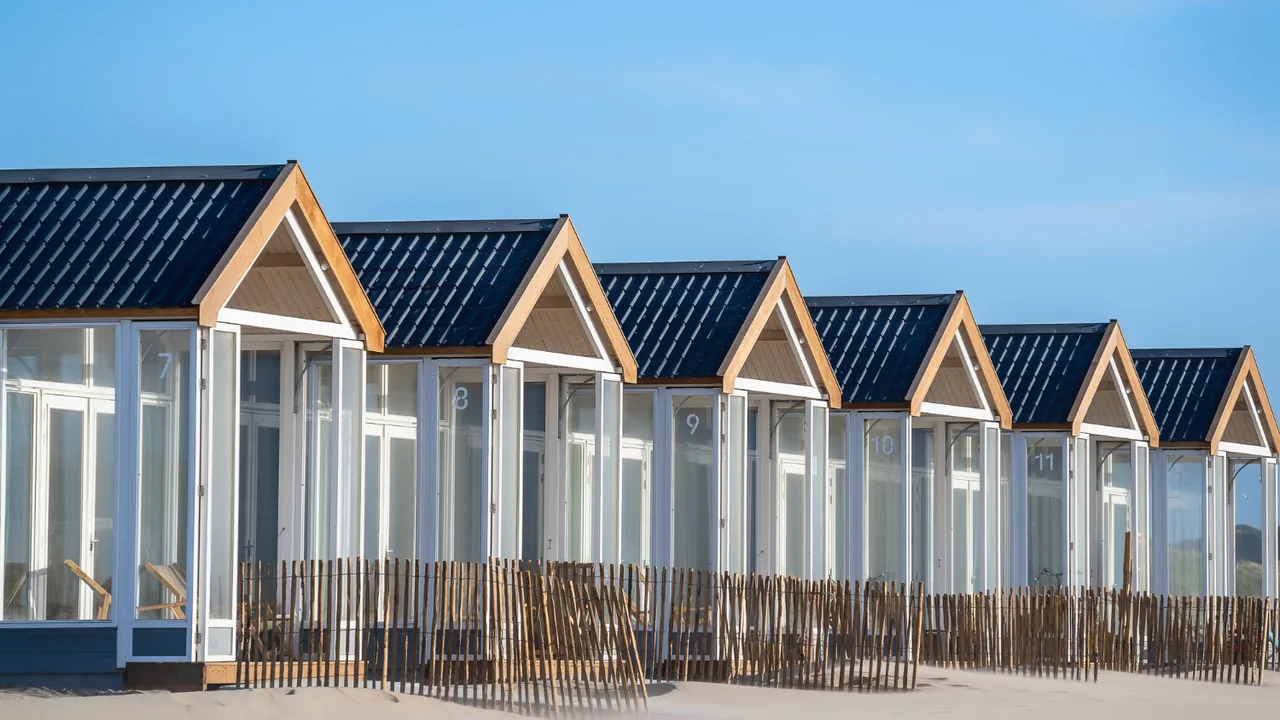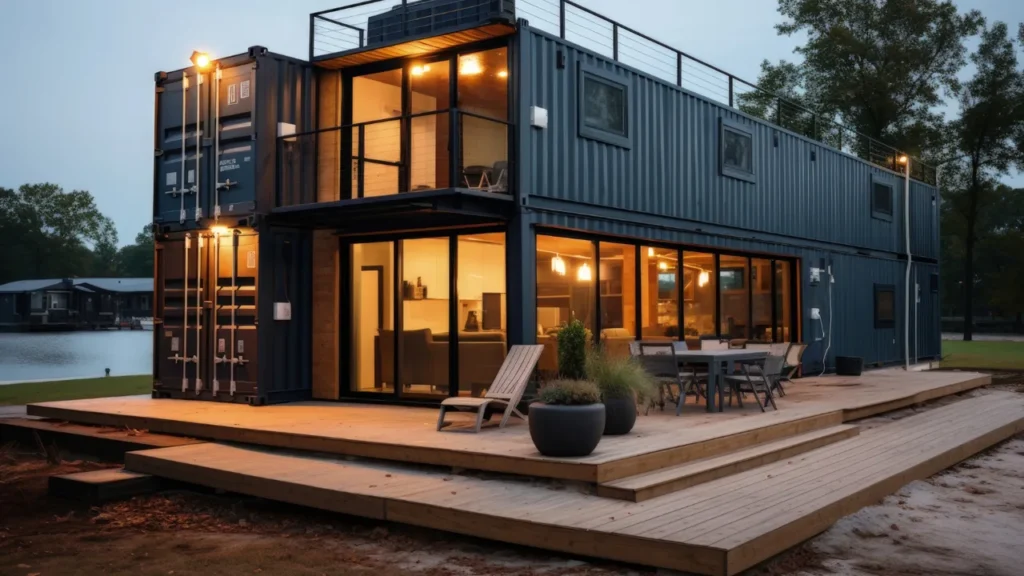For decades, home ownership has symbolized the American Dream — a goal tied to financial stability, family, and community. Yet for millions of Americans, that dream has slipped further away amid record-high real estate prices, rising mortgage rates, and a persistent shortage of affordable homes. With the median price of a single-family home now exceeding $422,000 and a shortage of nearly four million housing units nationwide, the challenge is clear: America needs a new model for building homes quickly, efficiently, and affordably. Enter modular homes.
Rising Prices and the Affordability Crisis
The U.S. housing market continues to strain under the weight of high demand and limited supply. While mortgage rates have begun to ease slightly, the cost of financing remains elevated, keeping potential buyers on the sidelines. For many families, especially first-time buyers, traditional construction timelines and rising material costs have made ownership unattainable. Amid these challenges, a new generation of builders is adopting factory-based modular home construction as a practical, scalable solution.
Fading West: Building Affordable Homes in Seven Days

Founded in 2016 in Buena Vista, Colorado, Fading West is leading a quiet revolution in the housing sector. Inside its 110,000-square-foot facility, workers assemble homes piece by piece under controlled conditions. Each modular unit — weighing around 10 tons — moves from one station to another every four hours. From floor framing to plumbing and cabinetry, the entire process takes less than a week. The result: a high-quality, energy-efficient home built faster and at up to 20% lower cost than traditional on-site methods.
“Our innovation is that we are manufacturers, not just construction workers,” says Eric Schaefer, Chief Business Development Officer at Fading West. “We bring the principles of lean manufacturing into homebuilding.”
How Modular Homes Work
Unlike mobile or manufactured homes, modular homes meet the same building codes as traditional residences. They are constructed in sections — often called modules — that are transported to a prepared foundation and assembled on-site. Because the process takes place indoors, weather delays are eliminated, quality control is more consistent, and material waste is reduced by nearly 25%.
This controlled environment also ensures better safety and working conditions for the construction workforce, who earn between $20–$30 per hour and benefit from year-round employment — a rarity in the seasonal housing sector.
Case Study: Hawaii’s Modular Recovery Project
After the devastating wildfires in Lahaina, Maui in 2023, Fading West collaborated with FEMA and New York’s DXA Studio to build 82 brightly colored modular homes for displaced residents. These one-, two-, and three-bedroom units, priced between $165,000 and $227,000, were produced in Colorado, shipped to Seattle, and transported by sea to Hawaii — all within five months.
This project marked the first time FEMA used modular housing instead of trailers for disaster relief — a major milestone for both emergency housing and the modular construction industry. It also proved that modular homes could serve both humanitarian and long-term community development purposes.
From Local Builder to National Innovator
Originally focused on small mountain towns near Colorado’s ski resorts, Fading West recognized early on the difficulty of building affordable homes in remote areas. A lack of skilled contractors, long winters, and high land prices made traditional development nearly impossible. By turning to modular production, the company not only overcame these challenges but also unlocked the ability to scale nationally.
Today, Fading West operates with a team of 160 employees and over $50 million in annual revenue. Projects are underway in Wyoming, Utah, Montana, Texas, and New Mexico. Despite its growth, Schaefer insists the company’s competition isn’t other modular builders — it’s the traditional homebuilding industry itself.
National Expansion and Policy Support
Interest in modular housing is spreading. Recently, New York Governor Kathy Hochul announced a statewide initiative that includes modular homes as a central strategy for expanding affordable housing supply. Still, modular construction accounts for just 1–3% of new single-family homes nationwide — a figure that has remained stable for over a decade.
According to data from the National Association of Home Builders (NAHB), modular homes once reached 7–8% of the market during the 2007–2008 housing cycle. Since then, consolidation among manufacturers has reduced factory capacity. But experts believe demand could soon revive the sector, as affordability pressures mount and consumers embrace quicker, more sustainable building options.
Beyond Speed: Sustainability and Efficiency
In addition to affordability, modular construction brings major environmental and logistical benefits. Because materials are pre-cut and used efficiently, waste is minimized. Indoor production protects components from weather damage and reduces emissions from repeated job-site deliveries. As DXA Studio’s co-founder Jordan Rogove explains, “Modular building leads to a more sustainable, less expensive, and better-built product.”
Michael Neal, a housing researcher at the Urban Institute, agrees, noting that the modular model has achieved something the traditional housing sector has not: measurable productivity gains. “Site-built homes haven’t seen major efficiency improvements in decades,” he says. “Modular builders can cut production time in half — and that includes navigating permits and inspections.”
Solving the Labor Shortage
One of the biggest hurdles in the housing market is the shortage of skilled labor. Traditional builders often rely on subcontractors and outdoor crews, both affected by weather and regional demand. Modular factories solve this by maintaining a stable, local workforce trained for repetitive, high-quality tasks. The approach provides consistent employment and ensures that workers develop specialized skills that improve long-term productivity.
Bringing the Dream Within Reach
While modular housing isn’t a cure-all, it represents a vital shift toward accessibility and innovation in U.S. housing. Fading West’s approach shows how a startup mindset can transform an industry long resistant to change. From affordable homes for teachers and police officers to high-end modular designs in Los Angeles, the company’s projects demonstrate flexibility and scalability.
“Maybe modular is how affordable housing is reached,” says Neal. And for families priced out of the traditional housing market, that possibility may be the most tangible path back to the American Dream.
Conclusion
In a nation facing an affordability crisis, modular homes offer speed, sustainability, and hope. They are not just an alternative construction method — they are a reimagining of how Americans can once again own a home. Whether serving disaster recovery efforts or building new communities, modular housing companies like Fading West are proving that innovation and compassion can coexist — and that the dream of home ownership might not be lost after all.


